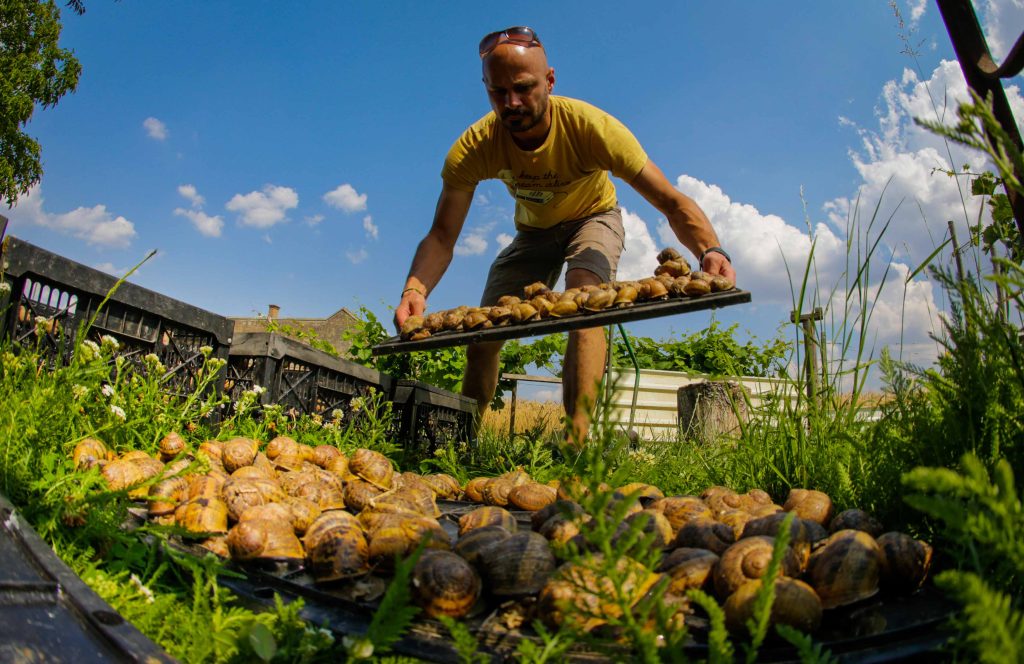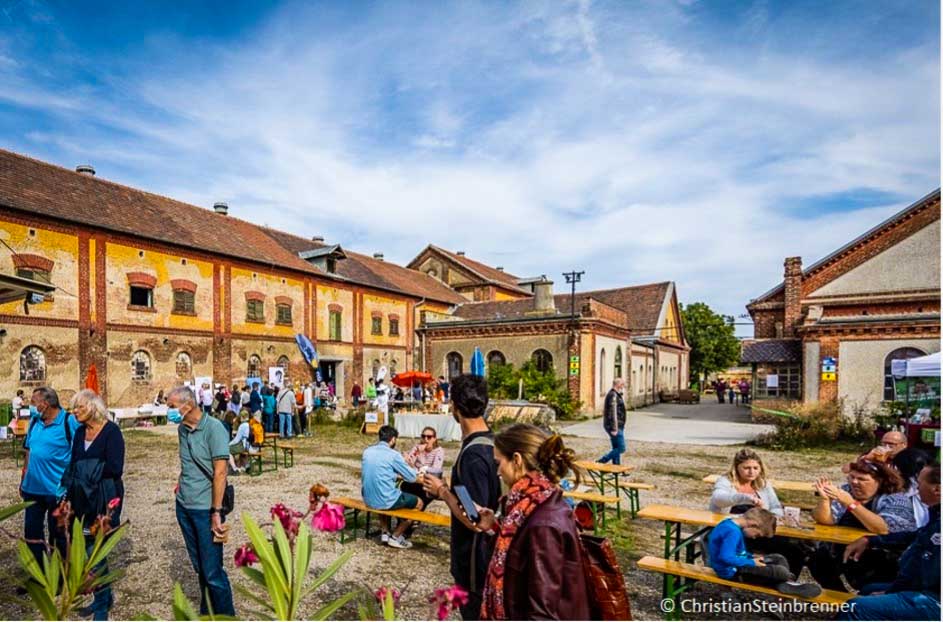What will the farms of the future look like in an increasingly urbanised world? We take a trip to the Zukunftshof, a pioneering initiative in Austria that wants to model a more sustainable approach to urban development with a focus on agriculture at its heart.
From vertical farms to community gardening, urban agriculture is increasingly touted as a novel way to improve food security and make cities more sustainable. But, for all its promise, significant challenges remain before the idea can really take root.
One of the key stumbling blocks is competition for land in urban and peri-urban areas. Despite holding some 40 per cent of the world’s productive cropland, peri-urban areas – those within 20 km of our cities – remain under increasing pressure from rapidly sprawling development.
Based on the current rate of urban land consumption, by 2030 we will have added 1.2 million km² of new urban built-up area to Earth’s geography, much of this being former farmland.
With two out of every three people likely to be living in cities or other urban centres by 2050, peri-urban development is inevitable. The question is whether cities can accommodate an increased population without sacrificing productive agricultural land and the knowledge and expertise associated with the people who farm it.
In Vienna, Austria, a local community association is experimenting with a new concept of development that doesn’t force people to choose between the two.
From Fringe to Focus
Located in Rothneusiedl, in the district of Favoriten, the Zukunftshof, or ‘Future Farm’, is a community-driven project designed to demonstrate how farmland and agricultural practices can be integrated into urban development rather than be replaced by it.
But, before it had anything to do with the future, the Zukunfsthof was simply a farm.
Previously known as the Haschahof, it is located on a former 20th century farmstead surrounded by over 100 hectares of the fertile land.
The first farm in Vienna to go organic in the late eighties, the Haschahof was eventually acquired by Wohnfonds Wien, Vienna’s social housing organisation, in 2015.
Being smack dab in the middle of a planned housing development for Rothneusiedl, it was originally slated to be demolished. But the local community had other ideas.
Out of a series of discussions with the local district about the future of the area, in 2018, an eclectic group of local farmers and residents formed the Zukunftsraum Rothneusiedl, an association with the aim of developing an urban agricultural precinct in the heart of Favoriten.
Andreas Gugumuck, a farmer in the local area and a principal member of the association, puts the concept in the following terms:
“With the knowledge that every field around us is already in the hands of construction companies, we created a project by which we accept that there will be a new future city here – we accept that construction companies belong – but we take this old agricultural tradition in the area into the next century.”
“We want this to be a cultural and civic centre. It should be the main site in the area for agriculture, urban farming, and gardening. It should also be an area for companies, maybe startups, in the area of food.”
Known as Vienna’s snail farmer, Andreas grew up in Rothneusiedl.
After 10 years working in the IT industry, he returned to take over the family property in 2014 and has since become a fixture in the local community.
Andreas says he saw the Zukunftshof as an opportunity to “do agriculture differently”.
“I connected with all my future food friends – Hut & Stiel, who breed mushrooms on coffee grounds, and Blün aquaponics – as well as many others, from the architecture, cultural or social disciplines, and we philosophised about a new way of doing things.”
The group describe the farm as a “lighthouse” project which models a new kind of development – one that preserves elements of both the urban and the rural, with productive agriculture and the circular economy at its heart.
“That’s the goal: a new way of living, where we connect this gap between the city and the land. The city has many advantages. You have culture; you have operas and theatres. But, on the land, you know each other; you help each other. It’s about connecting these.”

Closing the Circle
To its credit, the district saw potential in the idea. After a two-stage ideas competition in which interest groups submitted their proposals for the farm, in 2019 the Zukunftsthof project was awarded a 25-year lease to the property.
Almost three years in, the group continues to work on bringing their vision to life.
Alongside Andreas’s snail farm, the Zukunftshof is now home to a number of other urban agriculture projects, including a bakery, brewery, apiary, and mushroom farm. Andreas says they’re already putting their ideas into practice.
“The concept is to share. Not every producer needs their own cooling house or manufactory. So we share infrastructure, we share people, and we share energy and expertise in sales and marketing. Each producer is his own brand.”
Andreas acknowledges that there’s an element of going ‘back to the future’ about it.
“I grew up on a farm with chickens, rabbits, pigs, and so on, and everything you did, in a small way, was circular. Then, in the eighties, you had to specialise. That’s when the problems with the environment started. Now, we are closing the circle over producers again. When we take the snails out of their shells, we separate the insides, which are perfect food for the fish. The brewery and the bakery produce a lot of heat, which we use for energy.”
The Zukunftshof has also partnered with a range of other stakeholders who are interested in participating in the project.
“We have started a project with scientists from BOKU and TU and with other companies about the food-water-energy nexus, to analyse how we can close the circle. How much water do we need? What can we do with the rest of the water, with the groundwater and greywater, for example? How can we use the energy and the nutrients?”
The project continues to enjoy the support of the community, who have devoted countless hours volunteering to get it off the ground. But, despite community goodwill, Andreas admits that attracting investment has been a challenge.
“The banks say, ‘This is a great project; this is exactly what we need. But you need 30 per cent of your own money for this project.’ That’s the problem.”
Nevertheless, he believes that the Zukunftshof is a concept that’s made for the moment.
“We’re living in a society where people need easy answers. It’s very easy to be against things or want everything to be as it is now.
“But this project has to be done now. As the Ukraine conflict and other global crises show us, we have to build a new sort of society and a new kind of economy.”
“We want to develop, together with the city, a future city.”

